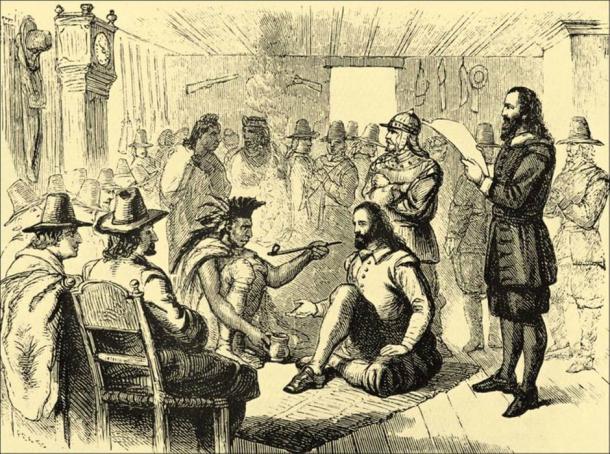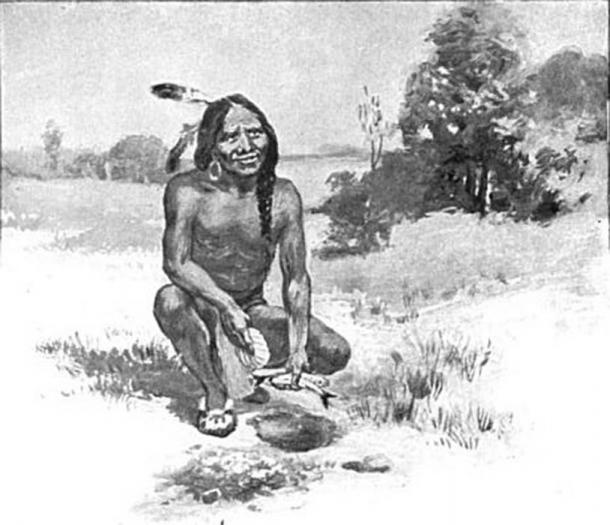On June 20, 1675, the small border town of Swansea, Massachusetts, was attacked by a band of Pokanoket of the Wampanoag tribe . No casualties resulted from the Pokanoket raid that day, except for some dead cattle and homesteads that were raided and robbed. Four days later, the massacre began. On June 24, the Pokanoket returned, and this time they killed none of the inhabitants but wounded seven. After the Pokanoket raid, the call to arms spread throughout the colonies, and the people responded. This was one of the most devastating conflicts in America, and it all started with the murder of John Sassamon and the trial that led to the execution of three Wampanoag warriors. However, there is a more important question. Was it really the trial and execution of the three warriors that gave rise to the war or was there more to the story?

Massasoit smoking a ceremonial pipe with Governor John Carver in Plymouth, 1621 ( Public Domain )
Wampanoag And Pilgrims Treaty
On the eve of June 20, 1675, the Wampanoag and Pilgrims relations were stable due to a treaty signed 54 years earlier between the two parties. The treaty was signed because the Wampanoag needed an ally against the stronger Narraganset tribe and the Pilgrims needed a parcel of land to call their own. Chief Massasoit of the Wampanoag, acknowledging that his tribe was weakened due to the ravages of a plague, reached out to the newly arrived Pilgrims seeking an alliance. The Pilgrims also had use of an ally, as they too were ravaged by a disease that decreased their population substantially since their arrival back on November 11, 1620.

Squanto or Tisquantum teaching the Plymouth colonists to plant corn with fish. ( Public Domain )
The facilitator who mediated between the two parties was Squanto of the Patuxet tribe, as the Patuxet were a part of the Wampanoag confederation. Squanto’s ability to speak English was due to his capture a few years prior by an English expedition that was scouting the Massachusetts Bay. Squanto’s capture proved to have educational value. After a few years at sea and visiting various places, he encountered many cultures and learnt the English language. He also received an education in how the English operated, both commercially and politically. Eventually, the English released Squanto back to his people, as he was more valuable to the English in his own land than aboard their ships.
Like this Preview and want to read on? You can! JOIN US THERE ( with easy, instant access ) and see what you’re missing!! All Premium articles are available in full, with immediate access.
For the price of a cup of coffee, you get this and all the other great benefits at Ancient Origins Premium. And – each time you support AO Premium, you support independent thought and writing.
Cam Rea is an author and military historian. He has written numerous articles for Ancient Origins, Classical Wisdom Weekly, and has authored several books, including: The Wars of Israel: A Military History of Ancient Israel from the End of Judges to Solomon
Top Image : Embarkation of the Pilgrims. Pilgrim Hall, Plymouth, Mass. ( Public Domain)
By: Cam Rea
 RSS Feed
RSS Feed















 January 26th, 2021
January 26th, 2021  Awake Goy
Awake Goy  Posted in
Posted in  Tags:
Tags: 













